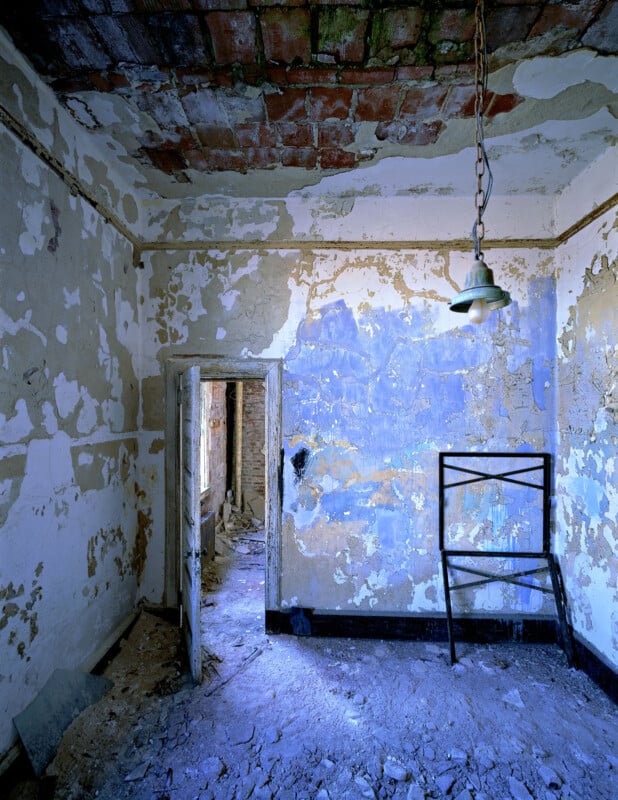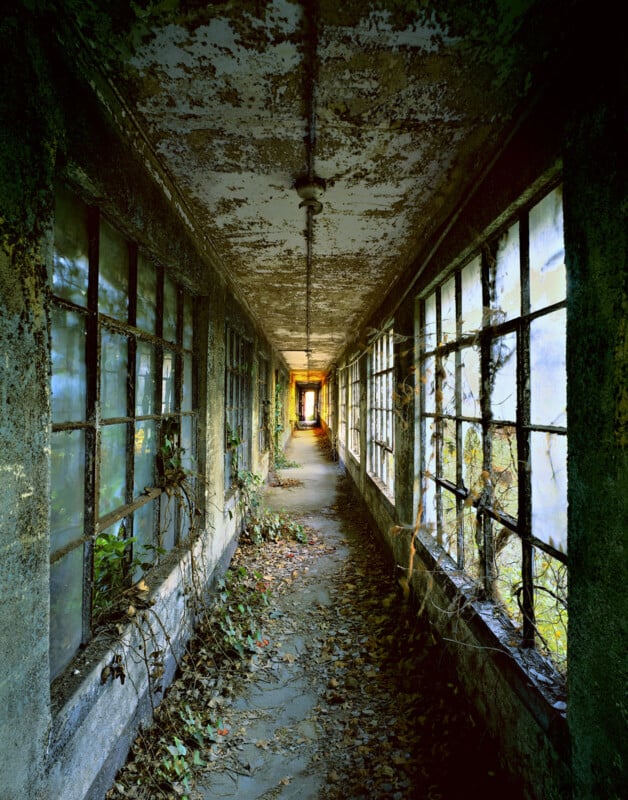![]()
Professional photographer Stephen Wilkes has a multi-decade career that melds artistic and commercial photography and has taken him around the world. He’s worked with National Geographic, Apple, and Netflix, among others.
Speaking at Apple’s flagship Fifth Avenue store in New York City, Wilkes offered a packed-house audience an overview of his career and dropped a number of gems for aspiring photographers. PetaPixel rounded up several pieces of advice that anyone can take from Wilkes, especially those looking to break into the field.
1. Practice with Film

“If you master your craft in the early years using film and then you move to digital, you’re wired differently,” Wilkes tells the crowd.
It’s common advice, but it bears repeating. Film, of course, forces the photographer to slow down and think carefully about each shot. But Wilkes reveals other ways it made him more meticulous. For example, he would never shoot a project entirely on one roll, lest it get damaged and he would lose everything. He would have his assistants stop him from shooting while he was in the middle of a roll to change out for another.

“That’s how paranoid I was about the idea of losing an image because of processing errors or some failure. And so that was the mentality. And so digital took away all that,” Wilkes tells PetaPixel.
Though his point that digital removed these hurdles, it should be noted, is a positive and part of why he eventually made the change. Still, it proves his point that mastering film wires a photographer differently.
2. Take Advantage of Your Phone
![]()
Lest anyone think Wilkes believes film is the only way to get started in photography, he highly encourages people to take advantage of phone photography.
“It’s not necessarily about what process you use, but it’s developing your eye and continually finding a way to be alive visually, to be conscious, to be present,” Wilkes tells PetaPixel.
It’s almost passé advice to carry a camera around all the time, but Wilkes suggests looking at the camera many already have in their pockets. Speaking at Apple, it’s little surprise that the professional touted the abilities of the tech company’s latest iPhone 15 Pro Max. Still, the new smartphone really does pack in a number of improvements for anyone taking photos and videos.
![]()
The iPhone 15 Pro Max sports a 48-megapixel main camera, 12MP ultra-wide lens, and a 12MP 2x telephoto camera. Wilkes, who used film well into the digital camera revolution, emphasized how undeniably far the technology in digital cameras has come. Specifically, Wilkes says it was when digital photography became capable of shooting at night, even on a phone, was a turning point for him.
And he doesn’t just mean DSLR and mirrorless models. In fact, Wilkes’ “Tapestries” project is taken entirely on iPhone. There’s no editing either. Instead, he uses a double exposure app that pulls everything together without any layers in post.
“When you’re present and you’re always looking, that’s when you discover things,” Wilkes remarks.
3. Pay Attention to Detail
One throughline in Wilkes’ work is the impeccable attention to detail. As noted, one key reason he made the switch to digital was the advancements made in resolution. Wilkes uses this constantly, always making sure even the finest details help shape the story. His “Day and Night” project, which combines photographs taken at a single location over an entire day to create an time-lapsed ombre effect in a single image provides a wealth of examples.
One image, taken on in New York City on Thanksgiving shows the famous parade put on by Macy’s on left-hand side of the image, which depicts the morning hours. Over to the right, viewers can glimpse a family having their Thanksgiving meal together through the window. It’s a tiny detail when zooming out to look at the entire image at once, but it makes taking a closer look all the more worth it, creating the sense that every pixel is used to tell the story.
“The power of observation is an incredible gift.”
Image credits: Photographs by Stephen Wilkes
